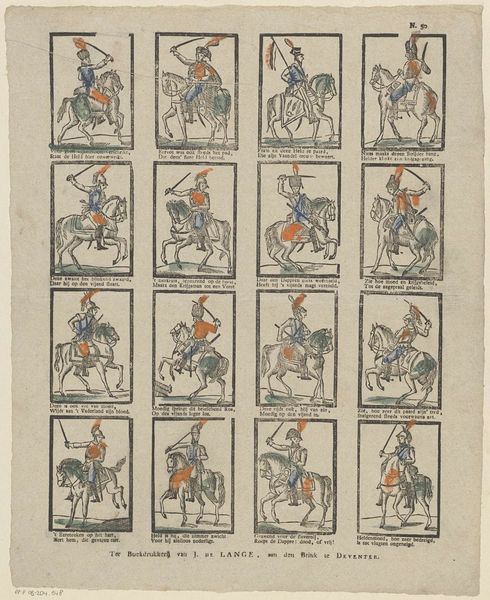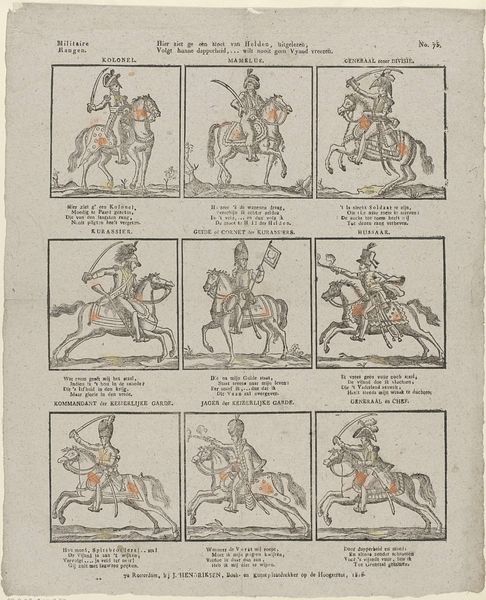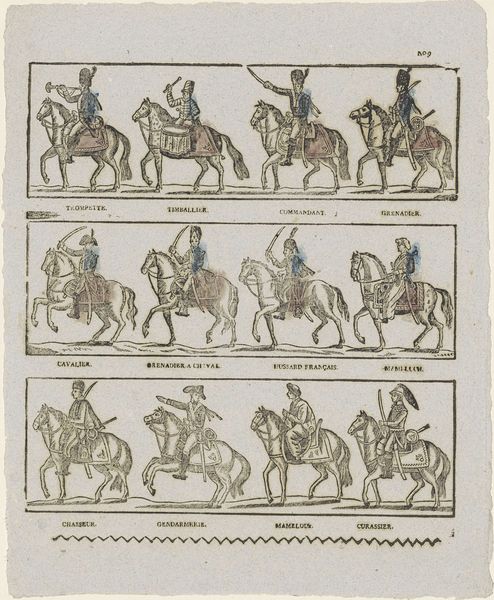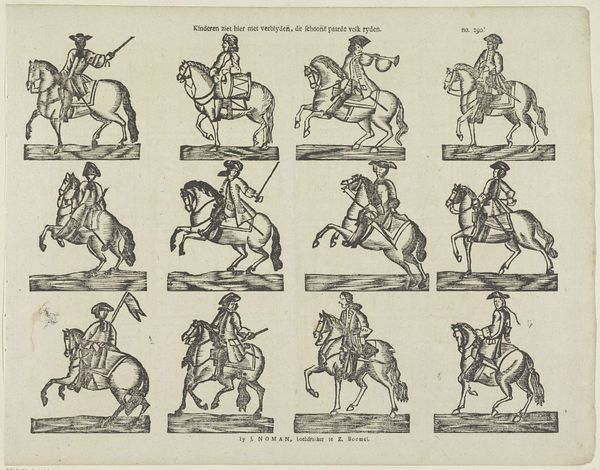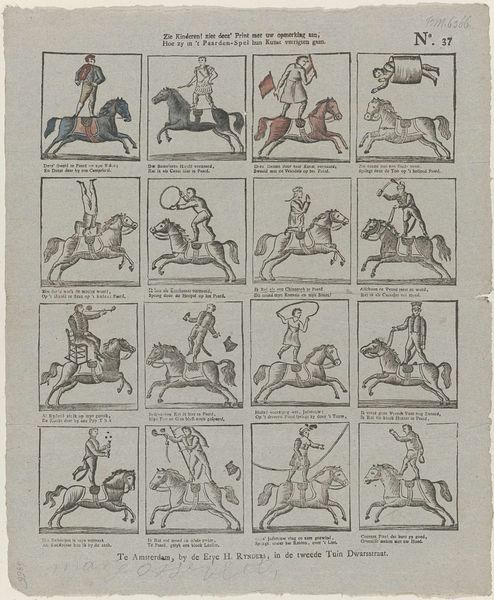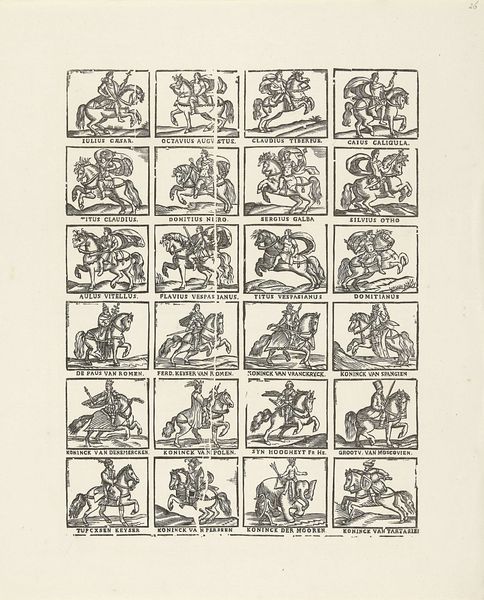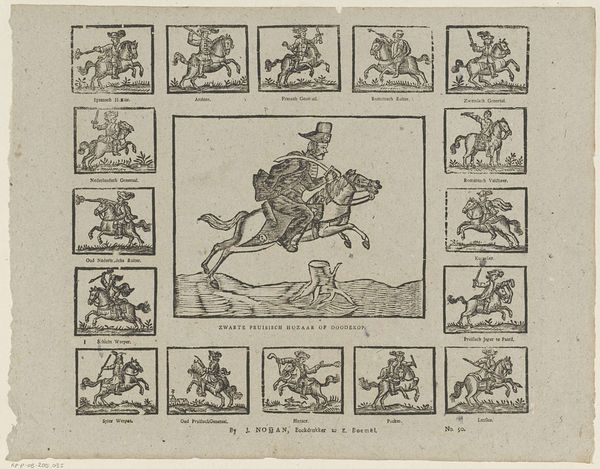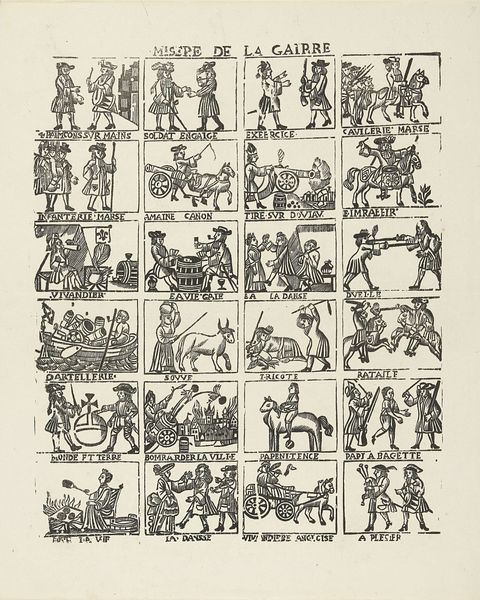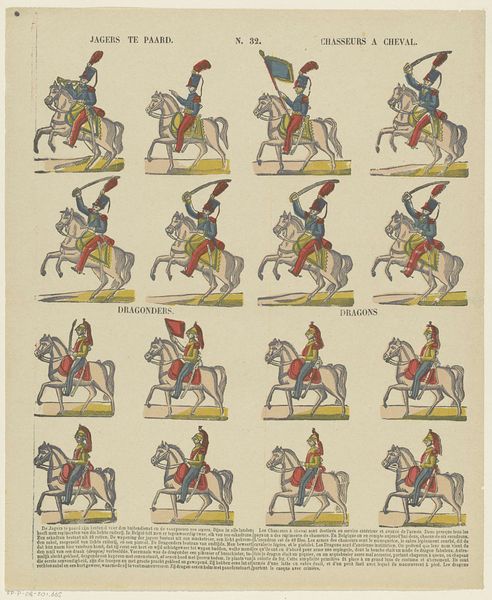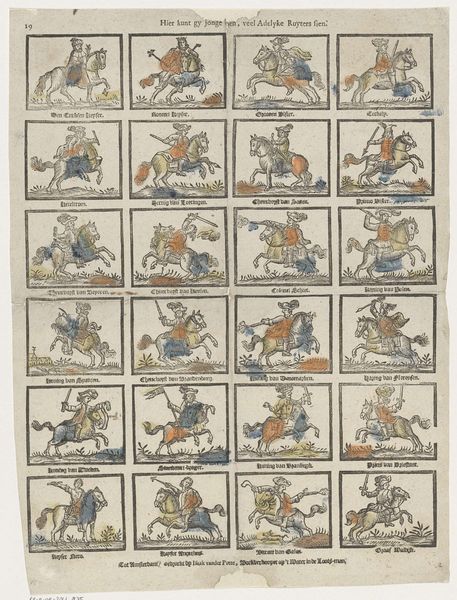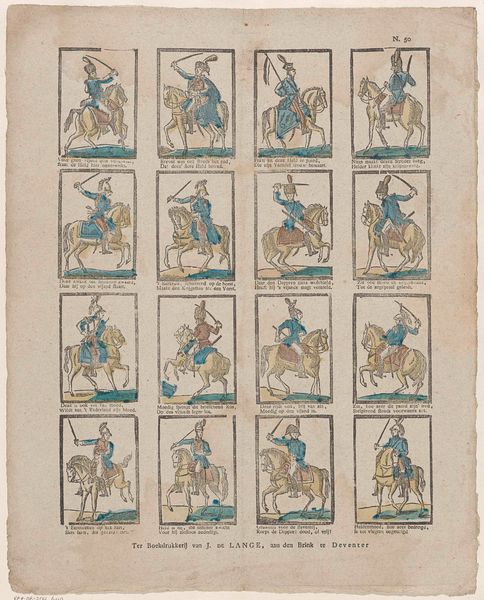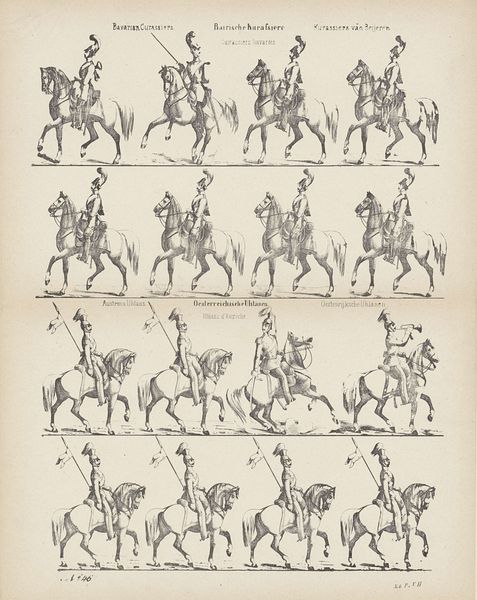
print, engraving
#
portrait
#
medieval
# print
#
pen illustration
#
figuration
#
line
#
genre-painting
#
history-painting
#
engraving
Dimensions: height 447 mm, width 363 mm
Copyright: Rijks Museum: Open Domain
Curator: Welcome. Before us hangs an engraving entitled "Cavalerie," possibly created between 1700 and 1865 and attributed to van der Haeghen. It’s part of the Rijksmuseum’s collection. Editor: Immediately, I notice this print is highly structured. Rows and columns present a typology of riders, each identified by his rank or role—is that right? The effect is almost…clinical. Curator: Precisely. Each rider’s title, inscribed above, and his accoutrements offer us a glimpse into military hierarchies and their attendant paraphernalia during that period. It’s tempting to consider what printing and visual materials such as this meant in disseminating military knowledge, both among and outside of military personnel. Editor: I am thinking, what social structures and power dynamics are baked into this piece? These aren't simply riders on horses, are they? These depictions seem to me symbolic, standing for specific gender roles and a vision of aristocratic masculinity. This ties directly to European colonialist ideology. Curator: The act of reproduction is central here. This wasn’t just about portraying individual figures. It’s about making types widely accessible and about valorizing them as well. How might it have circulated? Did these become collector's items for the upper classes, further solidifying social divisions and acting almost as advertisements for military positions? Editor: This work reinforces, reproduces, and packages power through clear markers of social role. Who gets to command? What does military power *look* like at this moment? The uniformity also obscures individual human costs. The work elides how that power is acquired and sustained. Curator: And how this very reproducible medium could be used, even weaponized to serve specific colonial projects. Considering the historical context, engaging with this piece in our contemporary world can provide important opportunities for decolonization. Editor: Exactly, the print as material object, shaped social perceptions. What we might consider mundane actually embodies and actively generates certain gendered, raced, classist positions that are crucial to question. Curator: Reflecting on "Cavalerie," it highlights the pivotal role prints had in disseminating social ideals of military standing through easily reproduced form and the materials required for its creation. Editor: Yes, "Cavalerie" invites us to scrutinize power structures encoded into such objects. It becomes a launchpad to reconsider the power of imagery itself, asking how it both reflects and constitutes cultural norms.
Comments
No comments
Be the first to comment and join the conversation on the ultimate creative platform.

